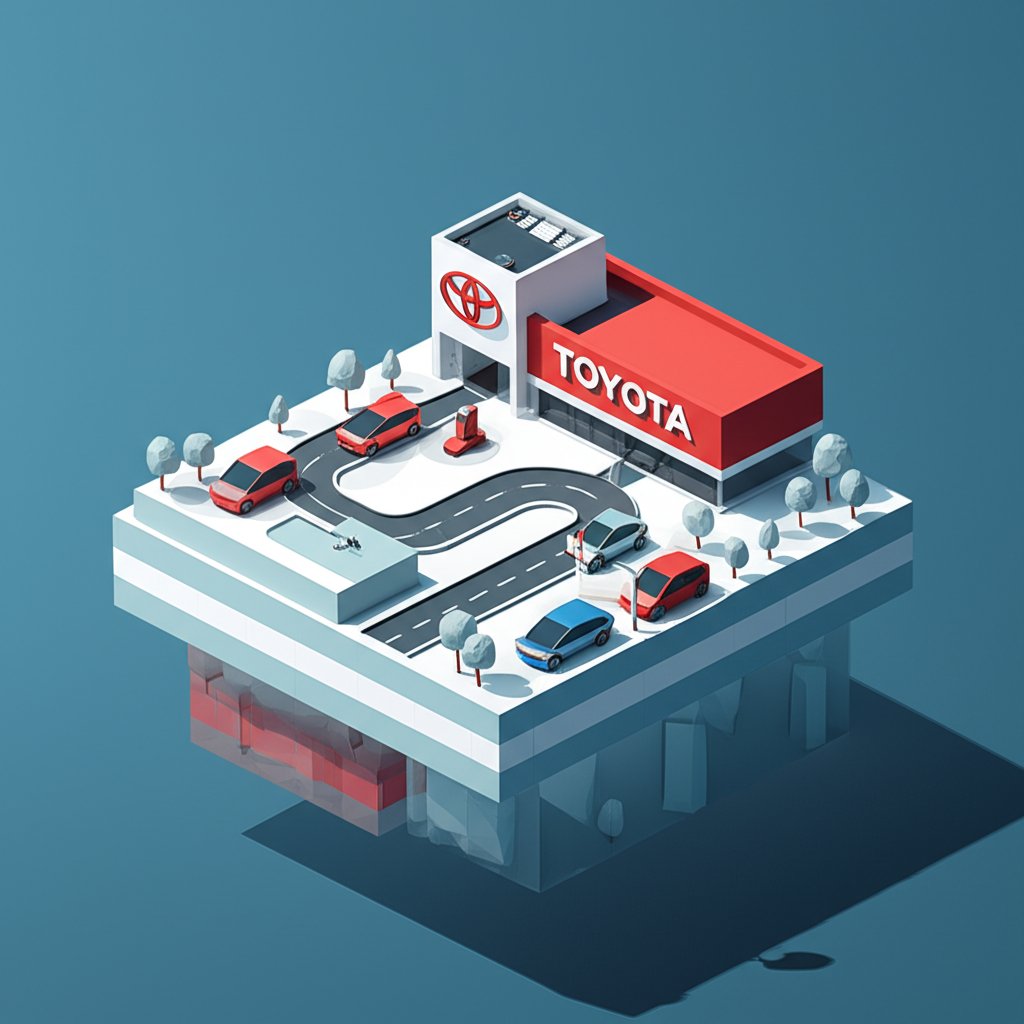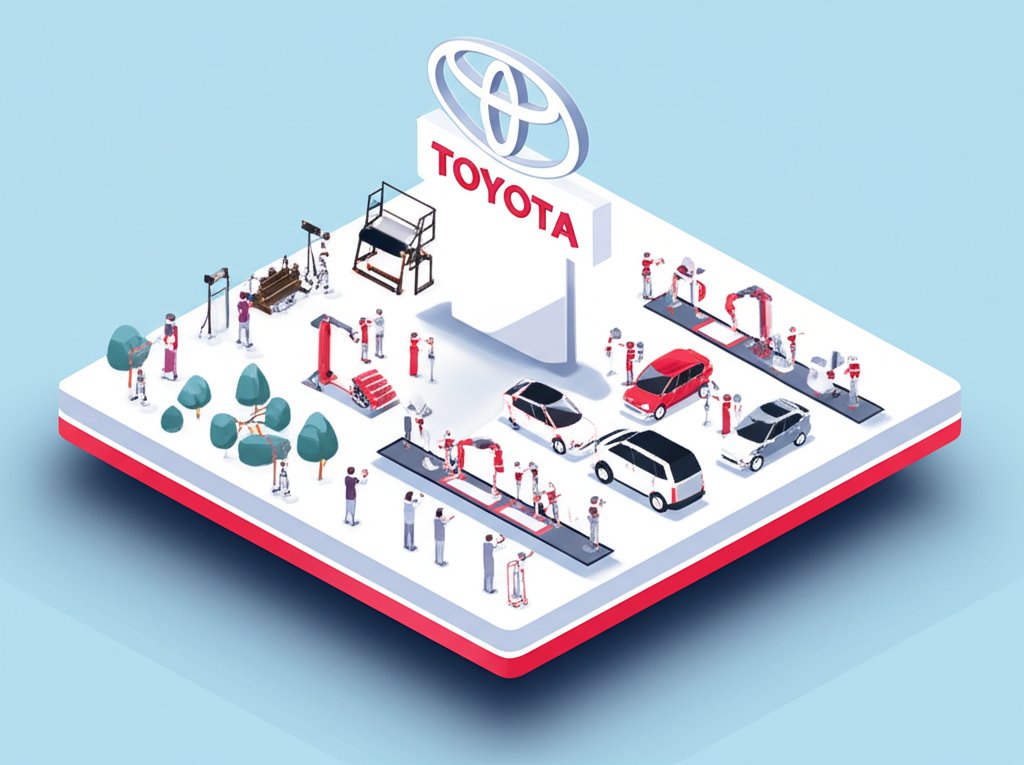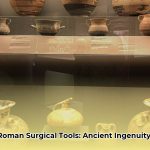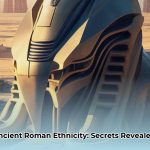Step into the extraordinary saga of Toyota, a name synonymous with reliability, innovation, and global automotive leadership. From its surprising origins as a textile machinery manufacturer to its present-day status as a mobility giant, the sejarah Toyota is a captivating narrative of visionary leadership, relentless engineering, and a unique corporate philosophy. This comprehensive exploration delves deep into the fakta sejarah Toyota that shaped this iconic brand, tracing the remarkable evolusi Toyota through crucial turning points, groundbreaking innovations, and enduring principles. Get ready to uncover the compelling journey of the Perusahaan Toyota that redefined not just automobiles, but also how industries operate worldwide.
A Legacy Forged in Looms: The Genesis of Perusahaan Toyota

The story of Toyota doesn’t begin on an assembly line, but rather in the intricate world of weaving. The roots of the Perusahaan Toyota are firmly planted in the late 19th and early 20th centuries, thanks to the inventive spirit of Sakichi Toyoda.
To understand the full impact of these early innovations, explore more fascinating Toyota facts that highlight the company’s unique journey.
Sakichi Toyoda: The Visionary Founder of Innovation
Born in 1867, Sakichi Toyoda was a prodigious inventor driven by a desire to make life easier for his mother, a weaver. His early innovations were in automatic loom technology. In 1890, he patented his first automatic loom, vastly improving efficiency and reducing manual labor in the textile industry. This commitment to continuous improvement, or “Kaizen,” and the principle of “Jidoka” (automation with a human touch, meaning machines stop themselves when a problem occurs) became cornerstones of the future Toyota philosophy. In 1926, he founded Toyoda Automatic Loom Works, laying the business foundation that would eventually birth the automotive giant.
Kiichiro Toyoda: The Automotive Dream Takes Shape
Sakichi’s son, Kiichiro Toyoda, shared his father’s inventive spirit but had a different vision. After traveling to Europe and the United States in the 1920s, Kiichiro became fascinated by the nascent automotive industry. He recognized the immense potential of motorized transport and convinced his father to invest in researching automobile production. Despite initial skepticism from within the loom company, an automotive division was established in 1933 within Toyoda Automatic Loom Works. This marked the official, albeit humble, beginning of the Perusahaan Toyota’s automotive journey.
From Textile to Trailblazer: Early Automotive Ventures & Fakta Sejarah Toyota

The transition from looms to cars was not seamless, but it was driven by an unyielding determination to build durable and efficient vehicles for the Japanese market. This period is rich with foundational fakta sejarah Toyota.
The Birth of the First Cars: Model A1 and AA
With limited resources and no prior automotive experience, Kiichiro and his team meticulously researched foreign cars, often reverse-engineering components. This intensive learning process led to the creation of the first prototype passenger car, the Model A1, in 1935. This was quickly followed by the first production vehicle, the Model AA sedan, in 1936. Designed with an emphasis on practicality and durability, the Model AA was a crucial step in proving Toyota’s capability in automotive manufacturing. Alongside it, the G1 truck was also produced, demonstrating the company’s dual focus on passenger and commercial vehicles. These early vehicles laid the groundwork for the future evolusi Toyota.
The Pivotal Name Change: Toyoda to Toyota
One of the most significant fakta sejarah Toyota occurred in 1937. Realizing the automotive division’s potential for independence, it was officially spun off from Toyoda Automatic Loom Works and incorporated as Toyota Motor Co., Ltd. Crucially, the company’s name was changed from “Toyoda” (the family name) to “Toyota.” This alteration was not merely cosmetic. In Japanese, “Toyota” (トヨタ) is written with eight strokes, a number considered auspicious and associated with prosperity and good fortune. This rebranding symbolized a new, independent beginning for the burgeoning Perusahaan Toyota.
Wartime Production and Post-War Challenges
The outbreak of World War II significantly impacted Toyota. Production shifted almost entirely to military trucks and other wartime necessities. The post-war era brought immense challenges, including severe material shortages and economic hardship, pushing the fledgling company to the brink of bankruptcy. However, this period also forged resilience. Toyota’s engineers and workers, driven by a spirit of innovation and survival, laid the groundwork for the systematic efficiency that would become their hallmark. The launch of the Toyopet Crown in 1955, a car designed specifically for Japanese road conditions, marked a turning point, signaling Toyota’s recovery and renewed commitment to passenger vehicles.
The Post-War Renaissance & Global Ascendance: Key Milestones in Sejarah Toyota
The mid-20th century saw Toyota not just recover, but redefine manufacturing and embark on an ambitious global expansion, profoundly shaping the sejarah Toyota as we know it today.
The Toyota Production System (TPS): A Revolution in Manufacturing
Perhaps the most impactful fakta sejarah Toyota is the development of the Toyota Production System (TPS). Spearheaded by Taiichi Ohno in the post-war era, TPS was a revolutionary manufacturing methodology designed to eliminate waste (“muda”) and maximize efficiency. Its core tenets include:
TPS transformed manufacturing worldwide, becoming a benchmark for operational excellence and a crucial driver of Toyota’s sustained success and quality reputation.
Breaking into the Global Market: From America to Europe
In 1957, Toyota made a bold move, establishing Toyota Motor Sales, U.S.A., Inc. This was a challenging entry, with early models like the Toyopet Crown being ill-suited for American highways. However, Toyota quickly learned and adapted. The introduction of the Corona in 1965 and, more famously, the Corolla in 1966, marked a turning point. The Corolla, designed as an affordable and reliable family car, became an international sensation and one of the best-selling cars in history. This success fueled Toyota’s expansion into Europe and other global markets, cementing its position as a truly international Perusahaan Toyota.
Iconic Models and Diversification
Throughout the latter half of the 20th century, Toyota’s lineup expanded dramatically, featuring a range of vehicles that became household names.
This era underscored the dynamic evolusi Toyota in design, engineering, and market strategy.
Pioneering Innovation: The Evolusi Toyota in Manufacturing and Technology
Toyota’s commitment to innovation extends far beyond its initial manufacturing processes. The company has consistently pushed boundaries in automotive technology, particularly in environmental sustainability and future mobility solutions, showcasing its ongoing evolusi Toyota.
Leading the Hybrid Revolution: The Prius Legacy
One of the most revolutionary fakta sejarah Toyota is its pioneering work in hybrid technology. In 1997, Toyota launched the Prius, the world’s first mass-produced hybrid electric vehicle. This bold move, driven by a long-term vision for environmental sustainability, was initially met with skepticism but soon became a global phenomenon. The Prius demonstrated that fuel efficiency and lower emissions could be achieved without sacrificing practicality, propelling Toyota to the forefront of green automotive technology and inspiring widespread adoption of hybrid powertrains across the industry. This marked a significant chapter in the evolusi Toyota.
Beyond Hybrids: Fuel Cells and EVs
The Perusahaan Toyota continues to push the boundaries of eco-friendly transportation. Building on its hybrid success, Toyota actively invested in hydrogen fuel cell technology, leading to the launch of the Mirai, one of the first commercially available fuel cell electric vehicles (FCEVs). More recently, Toyota has accelerated its efforts in Battery Electric Vehicles (BEVs), introducing new models and platforms (like the bZ series) to address the rapidly evolving global demand for fully electric cars. This multi-pronged approach to electrification highlights Toyota’s comprehensive vision for sustainable mobility and its continuous evolusi Toyota.
The Toyota Way: Philosophy of Excellence
Beyond specific technologies, the “Toyota Way” encapsulates the company’s core values, guiding its global operations. It is built on two main pillars:
This philosophy has not only driven Toyota’s internal success but has also been adopted and adapted by countless organizations worldwide, further cementing its legacy as a leader in management and operational excellence. This foundational philosophy underlies every aspect of the Perusahaan Toyota’s journey.
Toyota Today & Tomorrow: A Global Vision
Today, Toyota stands as one of the world’s largest and most respected automotive manufacturers, a testament to its enduring vision and adaptability. The Perusahaan Toyota continues to evolve, facing new challenges and opportunities in a rapidly changing world.
Global Reach and Economic Impact
With manufacturing plants and sales networks across every continent, Toyota is a true global powerhouse. It consistently ranks among the top automakers in terms of sales volume, producing millions of vehicles each year. Its operations support vast supply chains and provide employment for millions worldwide, making it a significant contributor to the global economy. The long and rich sejarah Toyota is deeply intertwined with global economic development.
Challenges and Future Outlook
As the automotive industry undergoes its most significant transformation in a century, Toyota is at the forefront of navigating complex shifts. The focus now is not just on building cars, but on providing comprehensive mobility solutions. Toyota is investing heavily in:
Projects like the “Woven City,” an experimental smart city at the base of Mount Fuji, showcase Toyota’s ambition to create a connected, sustainable future for humanity, moving beyond just being a car company to a mobility company. This bold vision marks the next stage of the evolusi Toyota.
Conclusion
The journey of Toyota is a remarkable testament to the power of vision, persistence, and continuous improvement. From Sakichi Toyoda’s humble automatic looms to Kiichiro Toyoda’s audacious leap into automotive manufacturing, the sejarah Toyota is filled with profound fakta sejarah Toyota that have shaped not only an industry but also global standards of quality and efficiency. The relentless evolusi Toyota, driven by the principles of the Toyota Production System and the Toyota Way, has transformed it into a global leader providing diverse mobility solutions. As the Perusahaan Toyota looks to the future, its legacy of innovation and commitment to a better world remains stronger than ever, promising continued leadership in the ever-evolving landscape of global transportation.
FAQ Section
Q1: When was Toyota founded and by whom?
A1: Toyota was founded in 1937 as Toyota Motor Co. Ltd. by Kiichiro Toyoda, spinning off from his father Sakichi Toyoda’s Toyoda Automatic Loom Works, which was established in 1926.
Q2: What was Toyota originally known for before making cars?
A2: Before manufacturing cars, the Toyoda family business, Toyoda Automatic Loom Works, was renowned for its innovative automatic weaving looms and textile machinery.
Q3: What was the first car produced by Toyota?
A3: The first production passenger car released by Toyota was the Model AA sedan in 1936, following the prototype Model A1 in 1935.
Q4: Why did the company’s name change from “Toyoda” to “Toyota”?
A4: The name was changed from “Toyoda” (the family name) to “Toyota” in 1937. This was done for several reasons: “Toyota” is easier to pronounce clearer with a stronger sound, and in Japanese, “Toyota” (トヨタ) is written with eight strokes, which is considered an auspicious number associated with prosperity and good fortune.
Q5: What is the Toyota Production System (TPS)?
A5: The Toyota Production System (TPS) is a management philosophy and set of practices that focuses on eliminating waste (muda), continuous improvement (Kaizen), and building quality into the process (Jidoka). It revolutionized manufacturing and is widely studied and implemented globally.
Q6: When did Toyota introduce its first mass-produced hybrid car?
A6: Toyota launched the Prius, the world’s first mass-produced hybrid electric vehicle, in Japan in 1997, and globally in 2000.
Q7: What is “The Toyota Way”?
A7: “The Toyota Way” is the corporate philosophy that underpins Toyota’s organizational culture, manufacturing, and business values. It comprises two main pillars: Continuous Improvement (Kaizen) and Respect for People.
Q8: What are some future directions for Toyota?
A8: Toyota is focused on becoming a comprehensive mobility company. Its future directions include accelerating the development and adoption of electric vehicles (hybrids, plug-in hybrids, fuel cells, and battery EVs), autonomous driving technology, advanced connectivity, and exploring new mobility services and smart city concepts like the Woven City.










